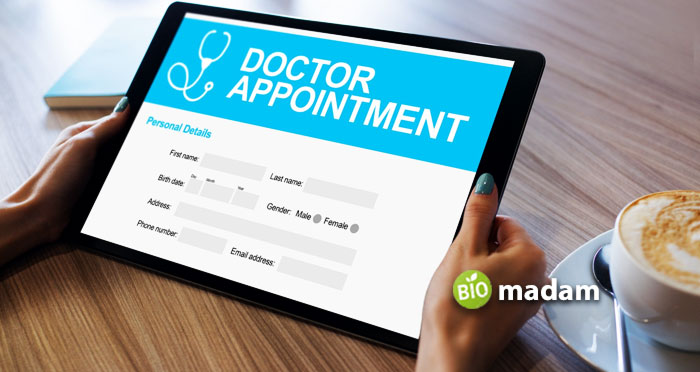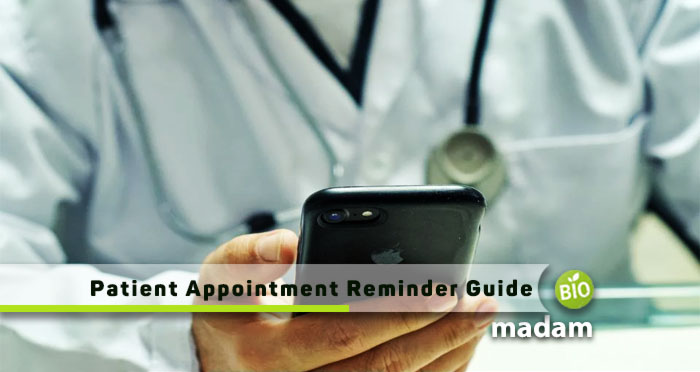Undoubtedly, one of the busiest and most congested industries today is the healthcare industry. Fortunately, technology is always ahead of time, with advancements that have successfully penetrated the healthcare system. These advancements made way for telemedicine and its accompanying practices, like more efficient online patient reminders.
To that effect, it’s important to remember that a smooth patient reminder system is the key to better operations in hospitals and clinics. Waiting in line the whole day for your appointment should be a thing of the past. This change positively impacts both ends of the equation, as patients no longer dread a tiresome waiting period and doctors can have more efficient clinics.
With that said, it’s essential to be in the loop of the best practices when sending patient reminders. Continue reading to learn more about these practices.
Give Patients a Variety of Options for Patient Reminder Channels
While manual scheduling on your calendar is still effective, this doesn’t mean you should dismiss automated patient reminders. Using software has many advantages, including the use of multiple patient reminder channels.
Let your patients choose their preferred mode of communication because not everyone is equally tech-savvy. Many still like old-school text reminders, while others prefer chatting or emailing. Besides, it’s enough that they have a lot on their mind, such as being anxious about their treatments, for example. You can make things easier on their part by being receptive to their preference among other concerns.
When you let your patients choose their preferred mode of receiving reminders, you’re effectively able to increase the chances of them seeing your reminders. Now you don’t have to deal with missed or late appointments because they couldn’t check their email or they didn’t have an internet connection at home.
Automation is Now a Non-Negotiable
Going hand-in-hand with the tip above, it’s now a must to emphasize how automation is a non-negotiable thing. You have to automate if you want to be efficient. There’s nothing wrong with keeping a manual desk calendar, but when the days get too busy and overwhelming, the best those calendars can do is remind your clinic of your schedule for the day, not the patients. The calendars you use can’t send those reminders on their own.
This is where patient appointment software comes into the picture. When your clinic staff meets with a patient, they automatically input the date or schedule of the next appointment. The software can do all the work using a pre-made template by sending out patient reminders.
Automation also makes it easy for your clinic staff to take note of patient responses. If the patient requests to reschedule, you must input that change in your system. The software will then make the follow-up reminder for that new schedule. The same holds for canceled and confirmed patient appointments.
When you allow technology to do its magic, you’re freeing time on your clinic staff’s schedule. Now they’ll have more time to deal with other important facets of your clinic’s operations. Moreover, you’re certain that no patient is left in the dark regarding their upcoming appointment.

Send Out at Least Two Types of Patient Reminders
As you meet new patients and let them select their desired mode of communication, provide them with at least two options. Doing so allows you to send patient reminders across two channels instead of just one. Applying this kind of system can assure that your patient has at least received and read one of those reminders.
Furthermore, sending two patient reminders doesn’t just encompass using two different channels but also sending those reminders in at least two different instances. You can send out the first reminder at least a week before their next appointment and the second one the day before.
This ensures your patient gets a customized and specific reminder for all their appointments. Should there be any changes, your clinic is also notified of that last patient reminder made a day before the set appointment. This reduces any ambiguity on schedules, such as when something else may have come up with the patient suddenly, so they have to reschedule a day before their appointment.
Along this line, it’s a must to respect this limit of having only two patient reminders and nothing beyond. Sending too many patient reminders may also overwhelm or even annoy your clients.
Keep Your Goals in Mind
No two clinics operate the same. You may want to get inspired by the patient reminder system of another clinic, but this doesn’t mean you should copy it in its entirety. For yours to be effective, you have to factor in your specific needs and preferences.
To start, you can’t go wrong with keeping track of your goals for sending out patient reminders. You can use that list of goals to double-check whether or not your current patient reminder system can keep up with and satisfy those goals.
For instance, you can have goals like:
- Reduce the workload of your clinic administrative staff.
- Reduce the likelihood of no-shows.
- Encourage patients to inform your clinic of a schedule cancellation in instances when they can’t make it to their appointments.
Ask for a Response
Patient appointment reminders without a call to action would be incomplete and ineffective. Thus, you may not be able to receive any assurance that the patient can either go or not without receiving any response from them.
The call to action doesn’t have to be complicated. It can be as simple as ‘If you’re able to attend, please confirm with a Yes. If you aren’t, reply No.

The Bottom Line
Whether you run a busy clinic or not, getting a grip on good patient reminder systems is a must. Healthcare workers are busy individuals, so it’s good that they’ll know what their workload will be like the following day. Additionally, patient no-shows can be cumbersome as the slots could have been given to other patients instead, and then you’ll have to reschedule those no-shows.
Missed appointments are also profit-eating as they also impact clinic efficiency and productivity. Therefore, if your clinic may have been suffering from such lately, it’s time to make a change by applying any of the best practices you’ve learned above.

Hi, they call me Jenna, and I am also known for achieving a gold medal during my Ph.D. in science life. I always had a dream to educate people through my utmost writing hobby. So, I chose this blogging path, and Biomadam gave me this opportunity to present for them. I now stand to entertain you. Continue reading my articles & discuss if you’ve any confusion through the comment section below.

